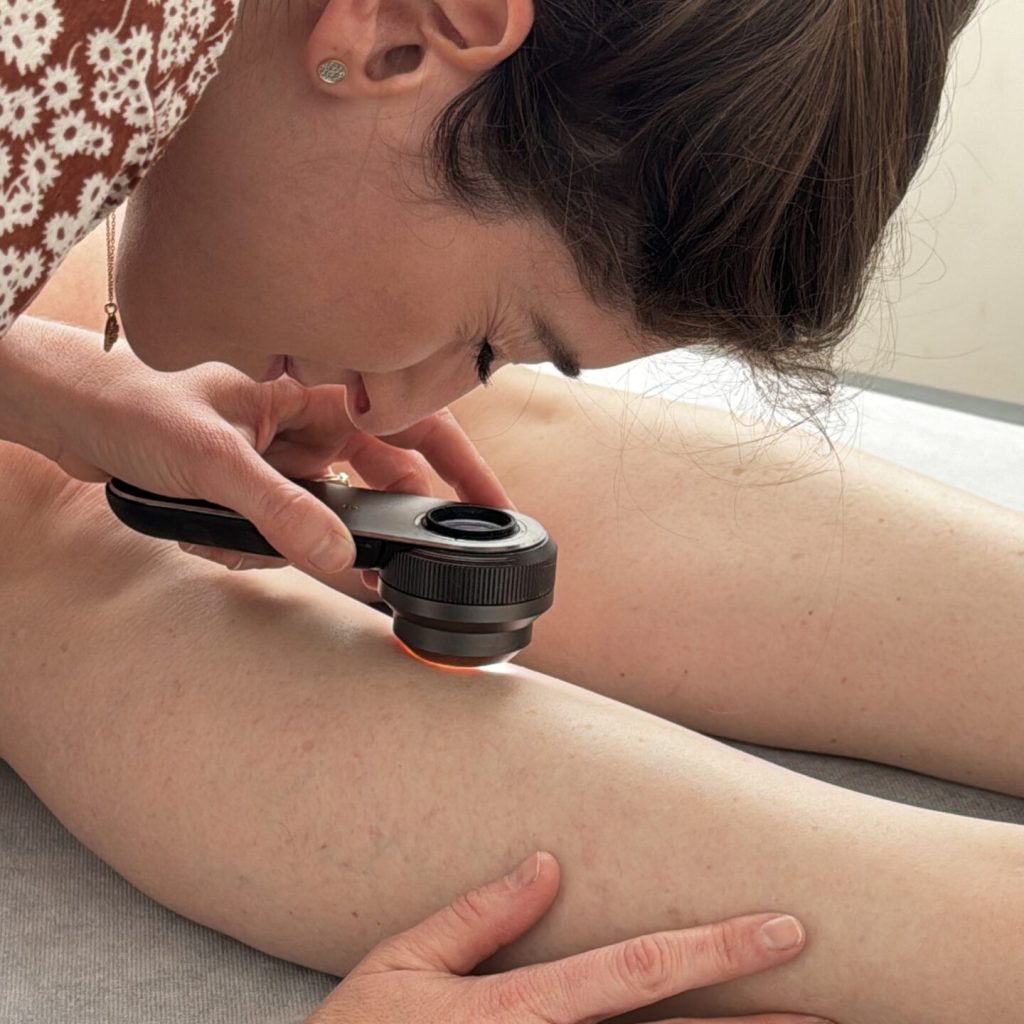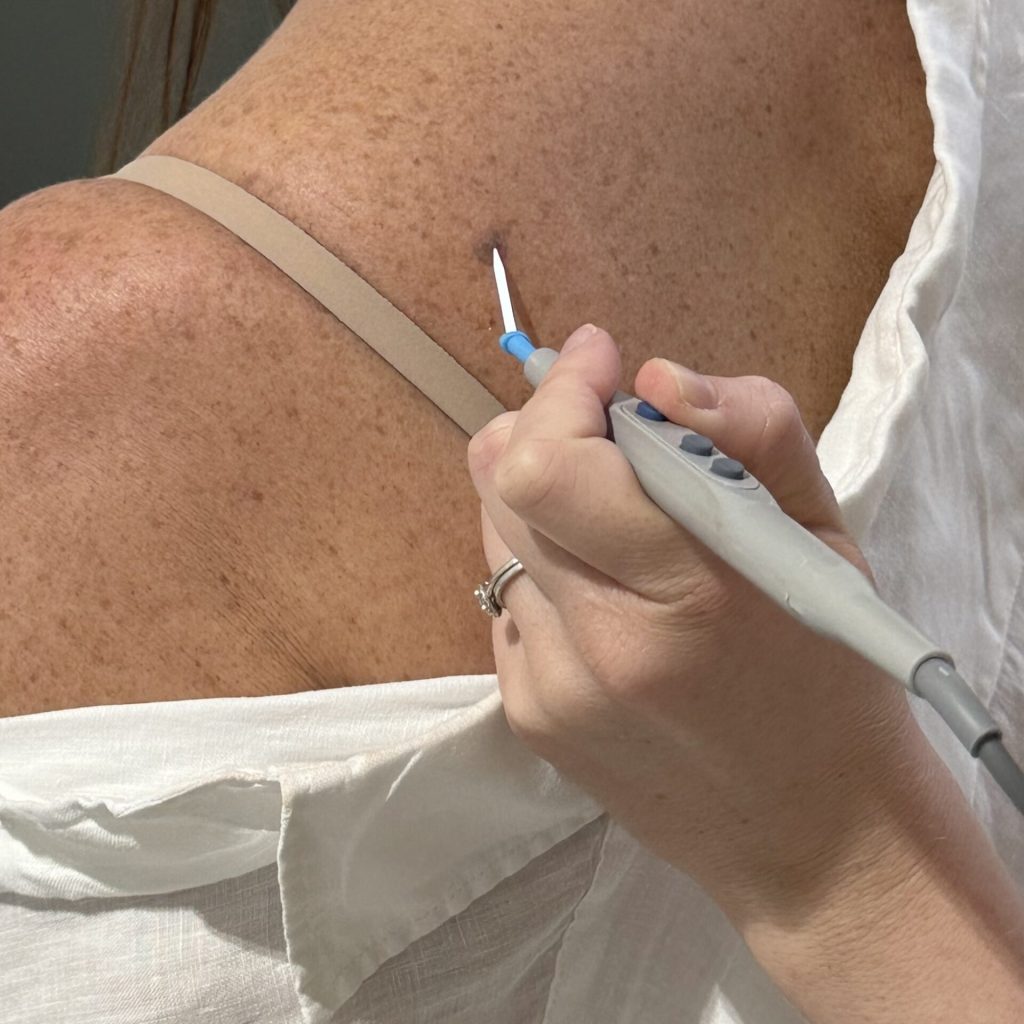ROUGEURS
En tant que plus grand organe du corps, la peau joue un rôle essentiel dans la protection contre les agressions extérieures et dans la régulation de divers processus physiologiques. La peau est également un reflet de notre santé globale, de notre mode de vie et de notre bien-être émotionnel.
Prendre soin de notre peau est donc crucial pour maintenir sa santé et son apparence. Cela comprend l’adoption d’une routine de soins de la peau adaptée à nos besoins individuels, la protection contre les dommages causés par le soleil et les éléments extérieurs, une alimentation équilibrée et une hydratation adéquate, ainsi que la gestion du stress et du mode de vie.
En investissant dans des habitudes de soins de la peau saines et en consultant des professionnels de la santé lorsque cela est nécessaire, nous pouvons aider à préserver la jeunesse et l’éclat de notre peau, tout en favorisant notre bien-être général.

Rosacée, couperose, érythroses
La rosacée, la couperose et les érythroses sont des affections cutanées qui affectent généralement le visage et se caractérisent par des rougeurs, des vaisseaux sanguins dilatés et des lésions inflammatoires. Bien qu’elles puissent présenter des similitudes, elles ont des caractéristiques distinctes :
- Rosacée : La rosacée est une affection cutanée chronique caractérisée par des rougeurs, des vaisseaux sanguins dilatés (télangiectasies), des boutons et parfois des nodules inflammatoires sur le visage. Elle peut également être accompagnée de sensation de chaleur, de brûlure et de démangeaisons. La rosacée peut se développer progressivement avec le temps et avoir des poussées de symptômes qui s’aggravent puis s’améliorent.
- Couperose : La couperose, également appelée télangiectasie, est une affection cutanée caractérisée par la dilatation des petits vaisseaux sanguins près de la surface de la peau, ce qui donne une apparence de rougeur diffuse ou de taches rouges sur le visage. Ces vaisseaux dilatés peuvent être visibles sous forme de lignes rouges ou de points rouges. La couperose est souvent associée à la rosacée, mais peut également se produire indépendamment.
- Érythroses : Les érythroses sont des rougeurs cutanées diffuses qui peuvent être temporaires ou persistantes. Elles peuvent être déclenchées par divers facteurs, tels que l’exposition au soleil, les changements de température, le stress, la consommation d’alcool ou de certains aliments épicés. Contrairement à la rosacée, les érythroses ne sont pas nécessairement associées à des vaisseaux sanguins dilatés ou à des lésions inflammatoires.
Ces affections peuvent être influencées par des facteurs génétiques, hormonaux, environnementaux et comportementaux.
NOS SOLUTIONS POUR TRAITER ROSACÉE, COUPEROSE, ÉRYTHROSES
Les angiomes sont des anomalies vasculaires bénignes qui se forment lorsque des vaisseaux sanguins ou des vaisseaux lymphatiques se développent de manière anormale. Ils peuvent apparaître sous différentes formes et tailles et se produisent le plus souvent à la surface de la peau ou juste en dessous. Les angiomes sont généralement inoffensifs, bien qu’ils puissent parfois causer des complications mineures, telles que des saignements ou des douleurs, en particulier s’ils se trouvent dans des zones sensibles ou exposées à des traumatismes.
Il existe plusieurs types d’angiomes, parmi lesquels les plus courants sont :
- Angiome plan : Aussi appelé tache de vin, l’angiome plan est une tache rouge ou violacée à la surface de la peau. Il est généralement présent dès la naissance et peut s’agrandir avec le temps, mais il reste généralement plat et ne dépasse pas la surface de la peau.
- Hémangiome : Les hémangiomes sont des angiomes composés de vaisseaux sanguins qui forment une masse ou une tumeur sous la peau. Ils sont souvent présents à la naissance ou se développent peu de temps après et peuvent varier en taille et en apparence. Les hémangiomes peuvent disparaître spontanément avec le temps, mais certains peuvent nécessiter un traitement, en particulier s’ils provoquent des complications ou s’ils affectent la fonctionnalité d’un organe.
- Angiome caverneux : Les angiomes caverneux sont des masses de vaisseaux sanguins dilatés qui se trouvent généralement dans les couches profondes de la peau ou des tissus sous-cutanés. Ils peuvent être bleuâtres ou violacés en apparence et peuvent être plus sujets aux saignements que les autres types d’angiomes.
- Angiome cerise : Aussi connu sous le nom de névus stellaire ou angiome stellaire, l’angiome cerise est un petit angiome composé de vaisseaux sanguins dilatés qui se trouvent généralement sur le visage, le cou, la poitrine ou le dos. Il ressemble à une petite tache rouge, parfois avec un point central plus foncé, et il peut saigner légèrement lorsqu’il est gratté ou irrité.
Les angiomes peuvent être présents dès la naissance ou se développer plus tard dans la vie, et ils peuvent varier en taille, en nombre et en apparence.




